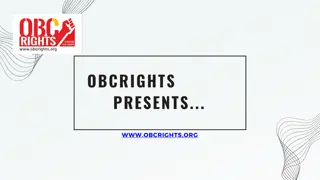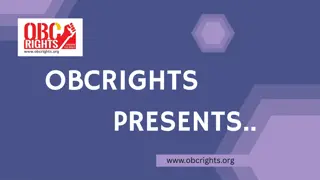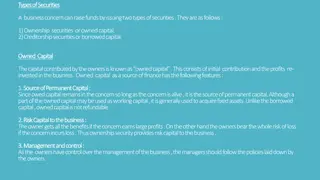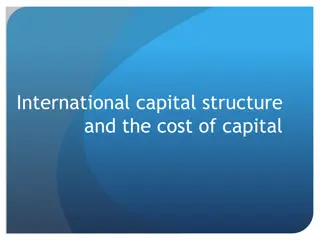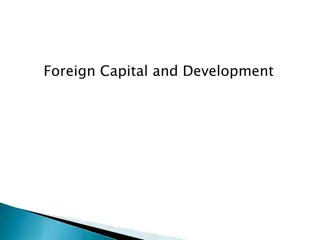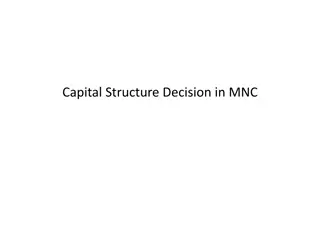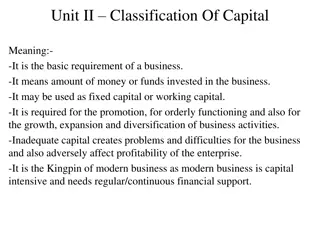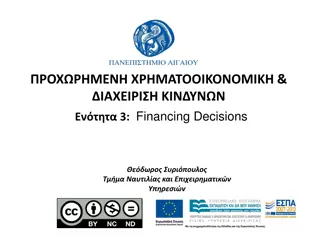Understanding Capital Requirements in LHPH Business
Learn about Lease Here Pay Here (LHPH) businesses that combine dealership and financial services, focusing on effective cash flow management, capital requirements, and the key factors to ensure success. Discover the benefits for both the business and customers, as well as the future outlook of LHPH models. Follow a simplified financial analysis scenario to grasp the importance of capital management in sustaining the operations of an LHPH venture.
Download Presentation

Please find below an Image/Link to download the presentation.
The content on the website is provided AS IS for your information and personal use only. It may not be sold, licensed, or shared on other websites without obtaining consent from the author. Download presentation by click this link. If you encounter any issues during the download, it is possible that the publisher has removed the file from their server.
E N D
Presentation Transcript
Come see what makes us different. Come see what makes us better!
About Lease Here Pay Here About Lease Here Pay Here LHPH merges the dealership and financial institution under one roof. We are predominately a hands on collection and customer service business that happens to offer vehicles. LHPH is a capital intensive business. Lack of capital is the number one reason LHPH businesses fail. Understanding cash flow, cash management and capital requirements imperative. Must have enough paying accounts to cover overhead and inventory replacement before running out of capital to be successful. LHPH can work nicely with a retail model if you lack sufficient capital to fund in house portfolio. Collections are manageable with proper collection practices.
LHPH LHPHBenefits Benefits Business and Tax Advantages We own vehicle, it is titled in dealer s name Recognize lease income as received, not when car is sold as in BHPH Simplicity, wrap all of our benefits into 1 rent charge No holding period or grace period; can pick up our asset and immediately re-lease Customer Advantages Mutually aligned interest to keep car on the road (Warranty) Property Taxes, Oil Change again its our vehicle but this is a customer benefit as well Trade Program keeping best customers in highest valued assets Lower Payments, which include Gap Insurance, Warranty, Property Taxes, Oil Change
LHPH = The Future LHPH = The Future Deal Structure Flexibility Control of the Asset Ability to Recycle the Asset
Understanding Capital Requirement is Key to Success Understanding Capital Requirement is Key to Success Cash flow in over simplified terms: Assumptions: 6,000 average cost per vehicle after reconditioning 1000 average down payment 10 sales per month 325 monthly payment 10,000 overhead per month
1stmonth: -Loan $50,000 on 10 vehicles leased -Overhead = $10,000 -Take in $10,000 in down payments -No payments collected -50,000 + 10,000 10,000 = 50,000 debt load 2ndmonth: -Carry $50,000 debt previous month -Loan $50,000 on 10 vehicles leased -Overhead = $10,000 -Take in $10,000 in down payments -Take in $3,250 in payments on 10 paying accounts -50,000 (previous debt) + 50,000 (new loans) + 10,000 (overhead) 13,250 (downs and pmts) = 96,750 debt load 3rdmonth: -Carry $96,750 debt previous month -Loan $50,000 on 10 vehicles leased -Overhead = $10,000 -Take in $10,000 in down payments -Take in $6,500 in payments on 20 paying accounts -96,750 + 50,000 + 10,000 16,500 = 140,250 debt load 4thmonth: -Carry $140,250 debt previous mth -Loan $50,000 on 10 vehicles leased -Overhead = $10,000 -Take in $10,000 in down payments -Take in $9,750 in payments on 30 paying accounts -140,250 + 50,000 + 10,000 19,740 = 180,510 debt load 5thmonth: -Carry $180,510 debt previous mth -Loan $50,000 on 10 vehicles leased -Overhead = $10,000 -Take in $10,000 in down payments -Take in $13,000 in payments on 40 paying accounts -180,510 + 50,000 + 10,000 23,000 = 217,510 debt load 9thmonth: Carry $309,010 Loan/Overhead $60,000 Downs $10,000 Payments $26,000 x 80 309,010 + 60,000 36,000 = 333,010 6thmonth: Carry $217,510 Loan/Overhead $60,000 Downs $10,000 Payments $16,250 x 50 217,510 + 60,000 26,250 = 251,260 7thmonth: Carry $251,260 Loan/Overhead $60,000 Downs $10,000 Payments $19,500 x 60 251,260 + 60,000 29,500 = 281,760 8thmonth: Carry $281,760 Loan/Overhead $60,000 Downs $10,000 Payments $22,750 x 70 281,760 + 60,000 32,750 = 309,010 10thmonth: Carry $333,010 Loan/Overhead $60,000 Downs $10,000 Payments $29,250 x 90 333,010 + 60,000 39,250 = 353,760 11thmonth: Carry $353,760 Loan/Overhead $60,000 Downs $10,000 Payments $32,500 x 100 353,760 + 60,000 42,500 = 371,260 12thmonth: Carry $371,260 Loan/Overhead $60,000 Downs $10,000 Payments $35,750 x 110 371,260 + 60,000 45,750 = 385,510 13thmonth: Carry $385,510 Loan/Overhead $60,000 Downs $10,000 Payments $39,000 x 120 385,510 + 60,000 49,000 = 396,510 14thmonth: Carry $396,510 Loan/Overhead $60,000 Downs $10,000 Payments $42,250 x 130 396,510 + 60,000 52,250 = 404,260 15thmonth: Carry $404,260 Loan/Overhead $60,000 Downs $10,000 Payments $45,500 x 140 404,260 + 60,000 55,500 = 408,760 16thmonth: Carry $408,760 Loan/Overhead $60,000 Downs $10,000 Payments $48,750 x 150 408,760 + 60,000 58,750 = 410,010 17thmonth: Carry $410,010 Loan/Overhead $60,000 Downs $10,000 Payments $52,000 x 160 410,010 + 60,000 62,000 = 408,010 18thmonth: Carry $408,010 Loan/Overhead $60,000 Downs $10,000 Payments $55,250 x 170 408,010 + 60,000 65,250 = 402,760 19thmonth: Carry $402,760 Loan/Overhead $60,000 Downs $10,000 Payments $ 58,500 x 180 402,760 + 60,000 68,500 = 394,260 20thmonth: Carry $394,260 Loan/Overhead $60,000 Downs $10,000 Payments $61,750 x 190 394,260 +60,000 71,750 = 382,510
Results: Greatest debt load was $410,010 in months 16/17 Turned cash flow positive month 17 with 160 accounts 160 x 325 = 52,000 52,000 + 10,000 = 62,000 62,000 = 2,000 more than the sum of the amount loaned and overhead = cash flow positive! Once you turn cash flow positive, you pay down debt as fast as you accumulate it. Facts not accounted for: Does not account for growth in number of leases per month Does not include totaled units where you get a lump sum payout from insurance company, but lose the paying account Does not account for repossessions/lost paying accounts Does not include recycled units that are re-leased for no cost Does not account for cash sales and outside finance sales where you get a lump sum payout without having to loan money Discussion: This is a number of paying accounts/downs per month (money coming in) vs. overhead/units leased (money going out) business. Obviously, you will continue to accumulate debt until there is more money coming in than going out. In the model above it becomes profitable when 160 accounts are paying monthly. Several facts of this business were left out in order to simplify it so you can see how the model becomes profitable. These omissions do not nullify the accuracy of the over simplified model because they cancel each other out over time. This model shows that this is a cash hungry business in that it took $410k to grow by 10 accounts a month. This is a benefit in that it keeps our competition to a minimum. It is a detriment in that most do not understand the model and therefore will not loan money to grow it. However, it also shows that our business generates an incredible amount of cash flow/profit if you have the capital to accumulate accounts and maximize growth. The model holds true as long as you keep your overhead in check and hold to the best practices we have standardized at Benchmark.
Maximize Your Advertising Dollars Word of mouth Fix the vehicle when your customer has a problem with it. There is no bigger bang for your buck in advertising than word of mouth. Drive by/Location Facebook Google AdWords Radio/TV Web Search Platforms






